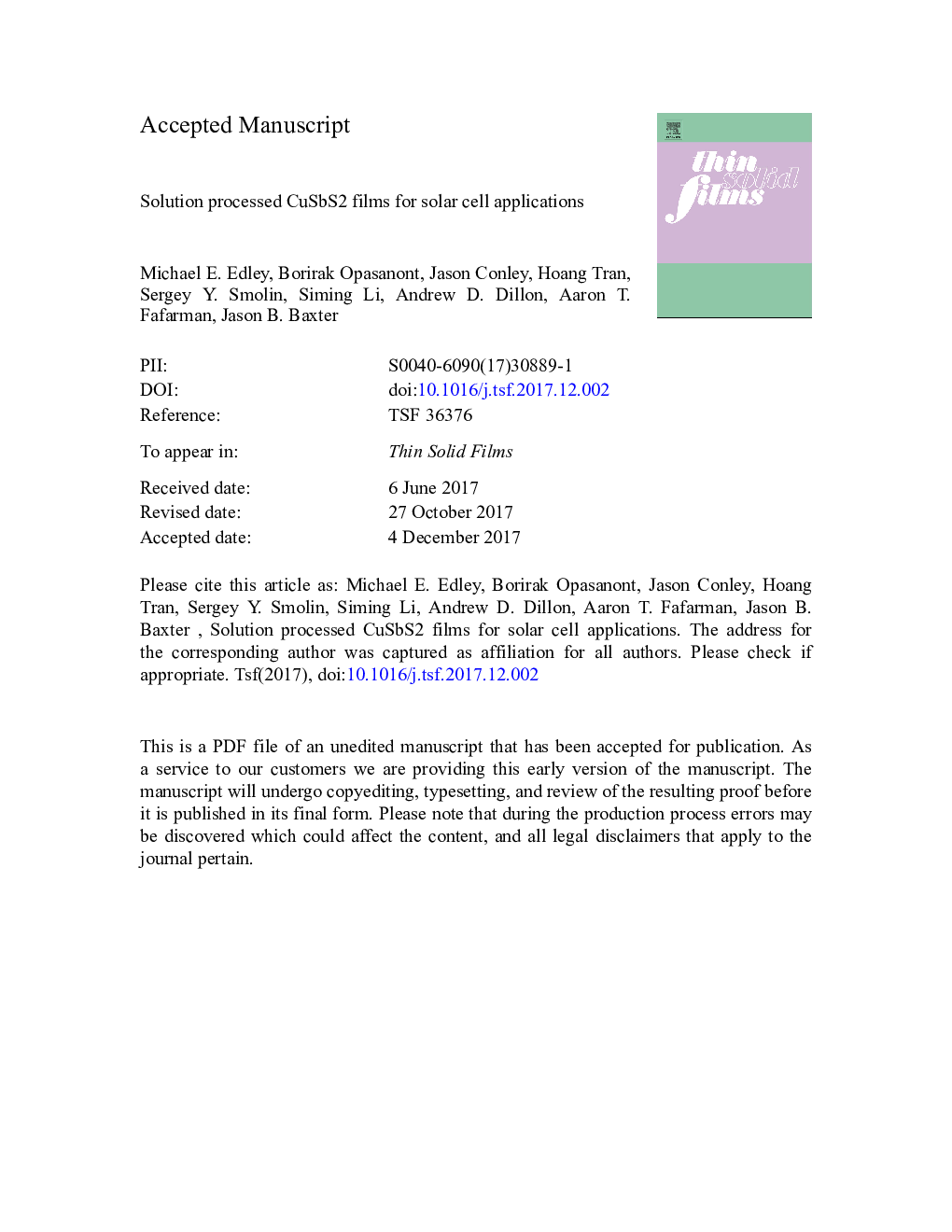| Article ID | Journal | Published Year | Pages | File Type |
|---|---|---|---|---|
| 8033105 | Thin Solid Films | 2018 | 46 Pages |
Abstract
CuSbS2 is a semiconductor with a band gap of 1.5Â eV and earth-abundant constituent elements, indicating potential promise as a photovoltaic absorber material. However, strategies to fabricate CuSbS2 films, especially using solution processing, have not been thoroughly developed. We report on two solution-based approaches to deposit CuSbS2 films: chemical bath deposition (CBD) and deposition of colloidal nanoplates. Conditions to directly deposit ternary CuSbS2 (chalcostibite) films were not found, but CuSbS2 films could be formed by annealing CBD-grown bilayers of CuS and Sb2S3. Simultaneous control over phase purity and film morphology proved elusive. To address this challenge, we synthesized colloidal nanoplates of phase-pure chalcostibite CuSbS2 capped with oleylamine ligands following a literature procedure. When colloids are condensed into thin films, these synthesis ligands are insulating and inhibit the inter-crystal charge transfer that is necessary for long-range charge transport. To solve this problem, two approaches were pursued: convective assembly followed by solid-state ligand exchange and a novel process involving solution-phase ligand exchange followed by electrophoretic deposition (EPD). Replacement of oleylamine with S2â increased the film conductivity by two orders of magnitude. S2â capping groups also increased the electrophoretic mobility and enabled EPD at bias voltages as low as 5Â V. Time-resolved terahertz spectroscopy indicated transient photoconductivity persisting beyond 1Â ns and carrier mobilities of ~Â 1Â cm2Â Vâ1Â sâ1. While many challenges remain, this work indicates the potential promise of solution-processed CuSbS2 nanoplates as building blocks for photovoltaic devices.
Keywords
Related Topics
Physical Sciences and Engineering
Materials Science
Nanotechnology
Authors
Michael E. Edley, Borirak Opasanont, Jason T. Conley, Hoang Tran, Sergey Y. Smolin, Siming Li, Andrew D. Dillon, Aaron T. Fafarman, Jason B. Baxter,
